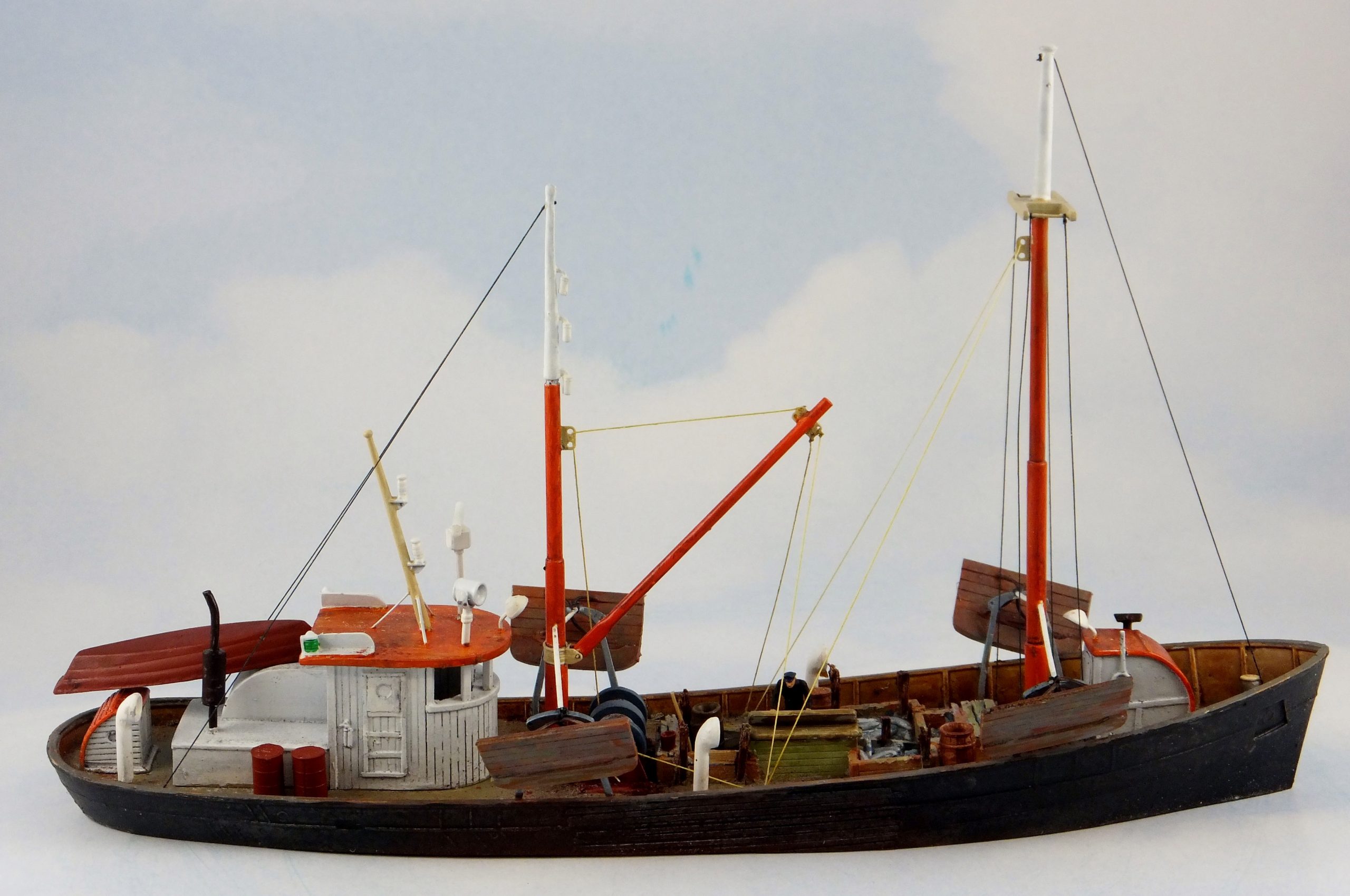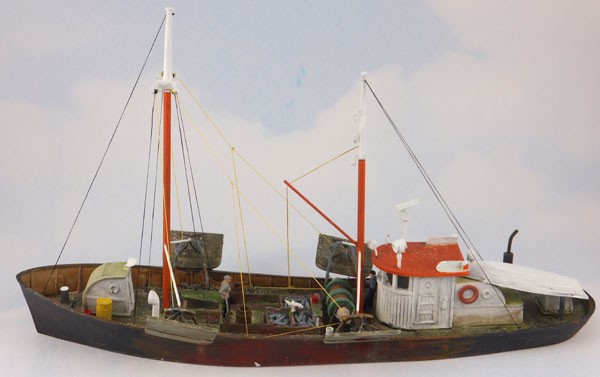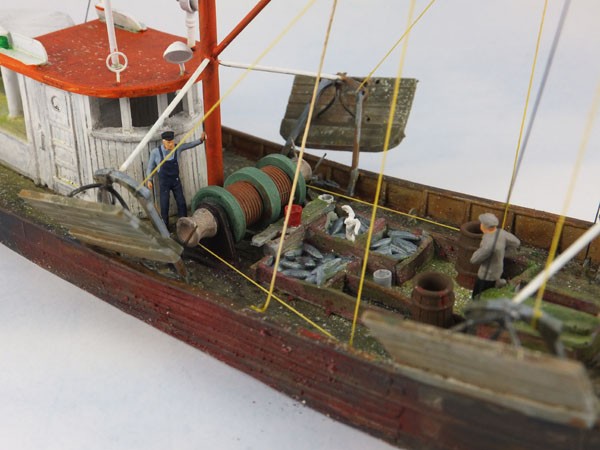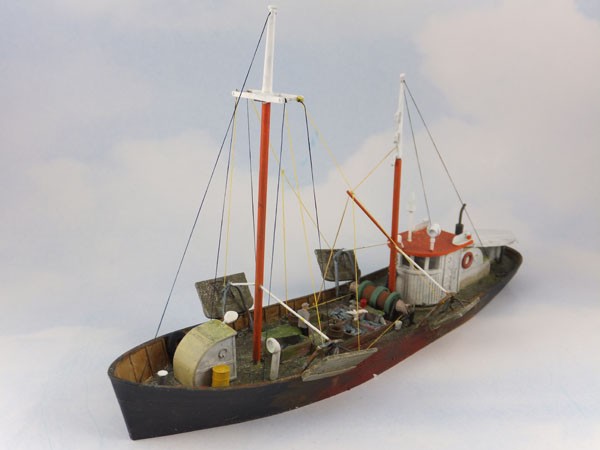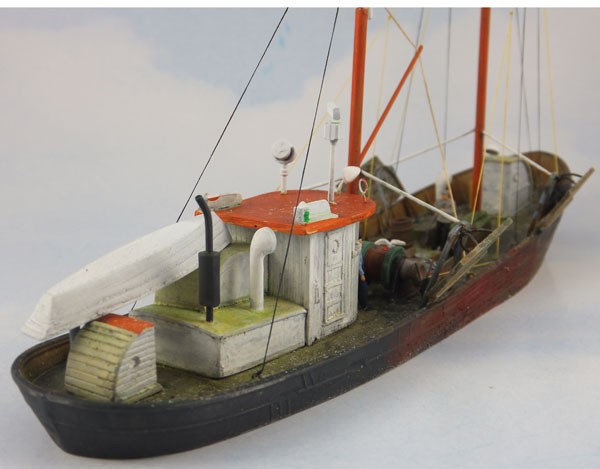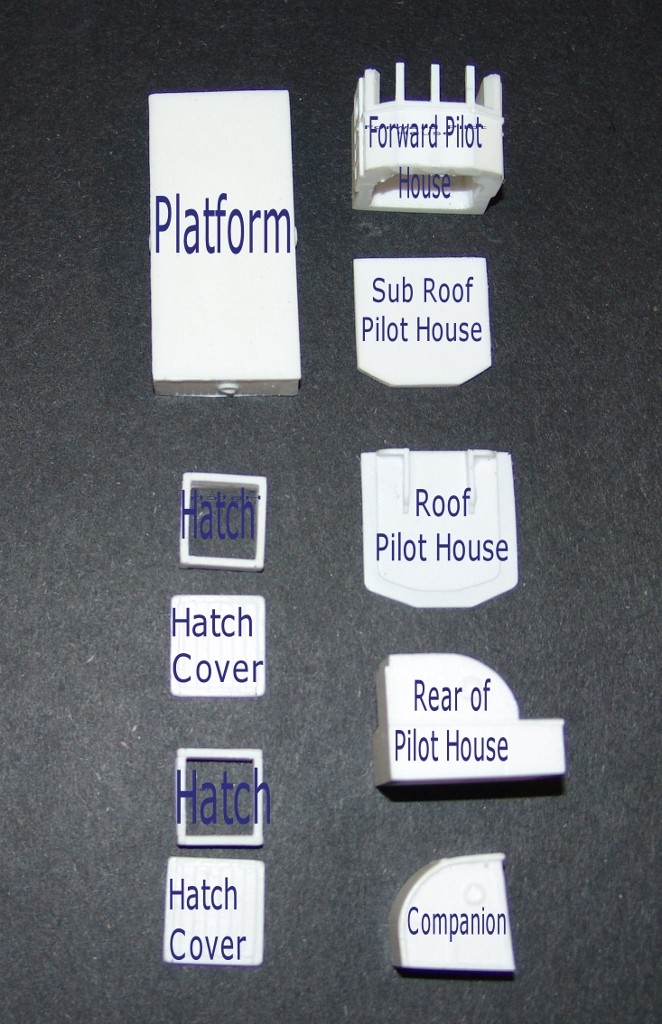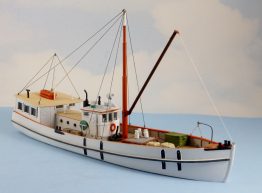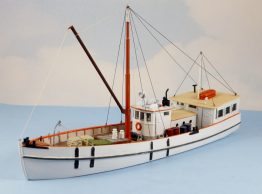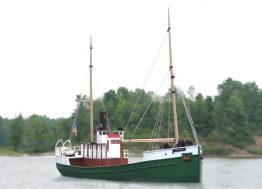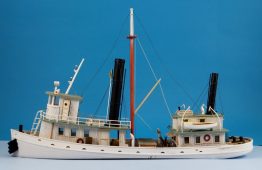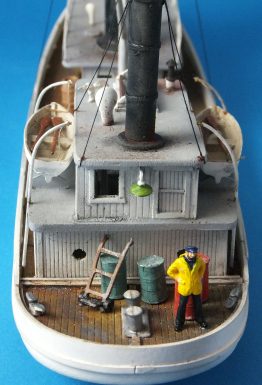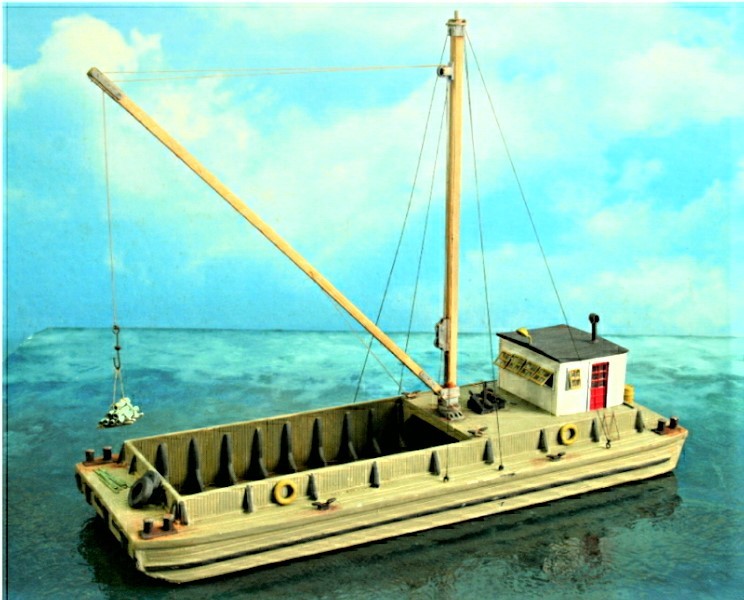Description
Resin – Metal – Wood
waterline
Length: 10 1/2 inches – Width 2 1/2 inches
NOTE: People figures, if shown in photos – Not included – sold Separately
We know of no other kit ever being offered of an American fishing boat with the detail and realism of this model. It is typical of draggers used from 1940 into the mid seventies. It is very possible to see these craft still working the waters today. A Sunday drive to Gloucester Mass may bring many exciting sights, smells and pleasant surprises including one of these old and tired vessels.
The most important feature of this model is the hull, superstructure, and rigging are of proper size, shape, and proportion. For added realism the pilothouse is hollow so the crew can be looking out the windows as well as working on deck. The one piece hull is molded with Bulwarks included.
Both trawlers and draggers pulled nets behind them but the dragger is generally considered to be a smaller vessel, maybe less than 100 feet. Draggers could work close to shore or well out to sea. Being smaller, they were much more adaptable to altering their equipment for seasonal changes and market conditions. The general idea was to put over a net (in the case of the “otter trawl “) and pull it along the bottom of the sea, collecting fish. These boats were most often seen with their rigging partially hanging over the side rather than with nets rolled up on large drums as seen today. The prominent parts of the dragger’s equipment are the flat banged-up rusted pieces that many times hang over the side. Although the formal name is “Otter Board” they were most often called “doors”. The name comes from the otter board used by salmon fisherman to curve their lines or net toward shore, the otter being a great predator of salmon. This same principal of the otter board was used in mine sweeping operations during WWII. The otter spread the line to one side of the vessel; a kite deflected the line to the desired depth below the surface so a mine mooring line could be snagged. The two doors used with the otter trawl to open the front of the net are. The photos we supply show the otter boards hanging over the sides of the vessel. A fishing net is not supplied with this kit because there is no material in HO scale that we are aware of, that will realistically represent a net. If you get some bridal vale and paint it brown there is a chance that your model will be improved. We have seen it done but in most cases when you view a fishing boat you don’t see the net unless you’re standing on a dock looking down at low tide. The net is not the most important thing that identifies a fishing vessel. You know a dragger whether it has a net or not.
REFERENCE – Extensive additional information regarding these wonderful Gloucester based vessels and crews, and their many tales and concerns can be found in a really good book (actually 2 books). They are “White-Tipped Orange Masts” Gloucester’s Fishing Draggers, A Time Of Change, 1970 -1972 by Peter K Prybot. Publisher is “The Curious Traveller Press”, ISBN 1-892839-01-6. It has 220 pages of useful information for the modeler and at least one photo of each boat in the fleet. Published in 1998. The second book is in most respects a copy of the first but some updating and changes. It is “White-Tipped Orange Masts”, “The Gloucester Draggers Fleet That Is No More”, by Peter K. Prybot. Publisher is “The History Press”, ISBN 978.1.59629.225.3, published in 2007. We highly recommend your searching out either of these books.
